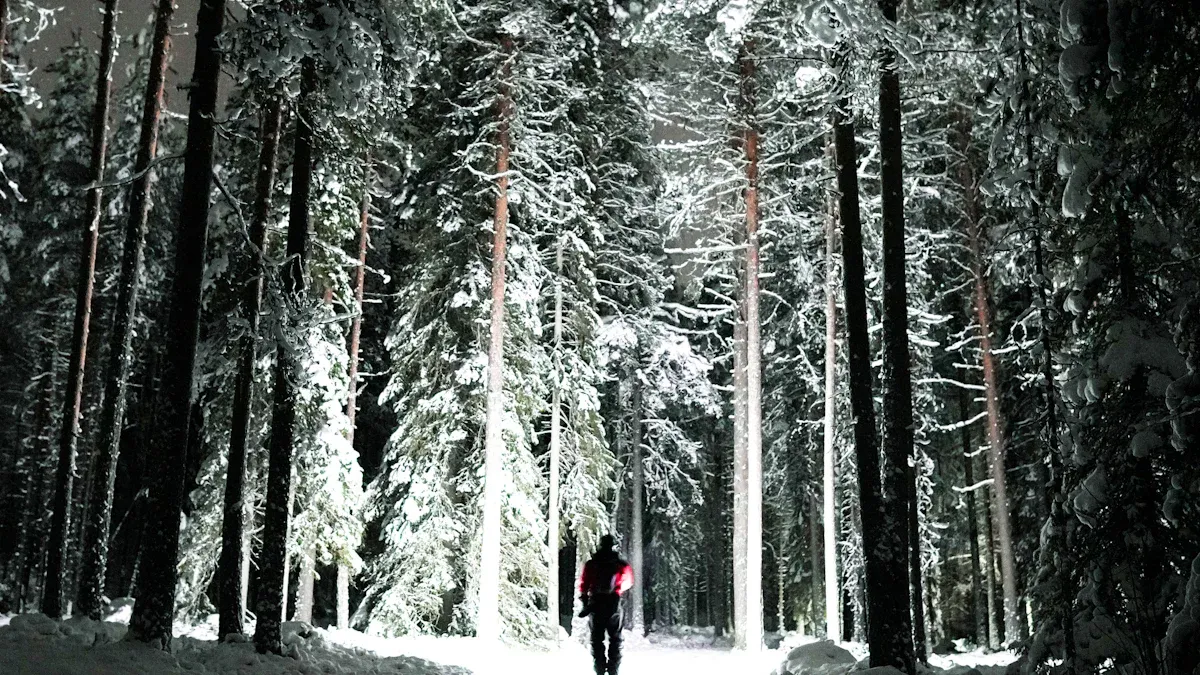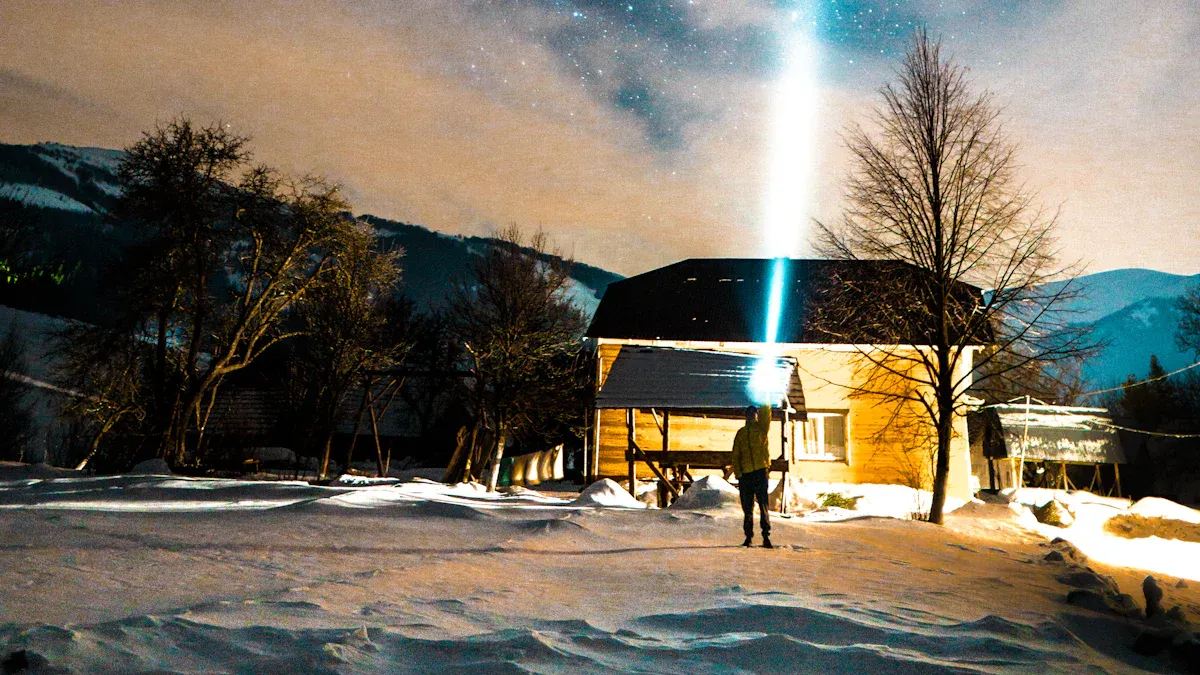Stocking for the Season: Which Flashlights Sell Best in Summer vs Winter

Summer sees high sales for wholesale flashlights bulk used outdoors. People rely on them for camping, hiking, and outdoor events. In winter, more people buy wholesale flashlights bulk for emergencies, especially during storms. Wholesale buyers use forecasting to plan inventory for each season. Bulk buyers monitor sales numbers and adjust inventory as needed. They also analyze trends for large wholesale flashlights bulk orders. Flashlights with strong features sell well in both seasons. Accurate forecasting helps companies maintain the right amount of stock and prevents shortages. Bulk suppliers study sales trends and use forecasting to plan effectively. Buying wholesale flashlights bulk allows distributors to respond quickly to sales spikes. Wholesale partners frequently check inventory and forecasting reports to ensure flashlights are available when needed. Bulk orders help companies keep sufficient stock and meet sales demands.
Key Takeaways
People want more flashlights in summer for camping and hiking. In winter, people need flashlights for emergencies like storms and power outages.
Wholesalers look at past sales and make predictions to plan what to buy. This helps them have enough flashlights without buying too many or running out.
Summer flashlights are light and easy to carry. They have waterproofing and USB-C charging. Winter flashlights are tough and last longer. They are very bright for emergencies.
Wholesalers use flexible stocking and good supplier relationships. They track inventory in real time. This helps them react fast when demand or supply changes.
Stores use smart promotions and teach customers about flashlight uses. This helps them sell more and keep the right amount of stock all year.
Seasonal Sales Trends

Summer Sales
People want more flashlights in summer because they do more outdoor activities. Families and friends go camping, hiking, and have fun outside. This makes many people buy wholesale flashlights bulk for these trips. Stores and sellers see more sales as people get ready to spend time outdoors.
Outdoor flashlight sales go up in spring and summer because of camping and hiking.
Wholesalers get more flashlights before summer starts to meet the higher demand.
People like bright and tough tactical flashlights for outdoor use.
Flashlight sales in cities stay about the same, but outdoor models sell much more in summer.
Tip: Wholesalers use special tools to look at sales trends and guess when sales will go up. They change their orders to match what people want and make sure they do not run out.
Stores plan sales and ads to start when camping season begins. They use marketing when they think more people will buy flashlights. This helps them sell more and always have flashlights in stock. New LED technology and energy-saving ideas also help flashlight sales grow in summer.
Winter Sales
Winter changes what people need from flashlights. Places with long winters or lots of storms need more emergency lighting. People buy flashlights in bulk to get ready for power outages and to stay safe. Wholesalers get more flashlights before winter storms come.
Winter Sales Drivers | Impact on Demand |
|---|---|
Storms and power outages | High bulk purchases |
Emergency preparedness | Increased sales |
Weather-triggered advertising | Demand spikes |
Stores use smart ads to sell more flashlights during winter storms. They put signs where lots of people walk and use screens to show updates. Ads match the weather, so people feel they need to buy flashlights fast. Studies show that weather makes a big difference in how many flashlights are sold each year. Ads about weather help people decide to buy, especially around holidays.
Stores use signs and screens to make people feel they need to buy now with discounts and special deals.
They put signs at doors, checkouts, and on special shelves so everyone sees them.
Screens show updates and ads that change with the weather.
Special displays and gift-wrapping areas make people stay longer and buy more.
Ads use timers and flash sale news to make people hurry and buy.
Wholesalers use forecasting to guess how many flashlights people will want. They watch trends and big orders to keep enough flashlights in stock for winter. People in cities like small, easy flashlights for daily use and emergencies. Wholesalers change what they sell and how they sell it to keep sales steady all year.
Note: Good forecasting helps wholesalers react fast when more people want flashlights. They use sales numbers to plan how many to order and make sure they do not run out during busy times.
Flashlights Demand Factors
Outdoor Activities
Outdoor fun makes people want more flashlights at certain times. In summer, people camp, hike, and explore outside more often. This means they need good lights to stay safe at night. Many pick flashlights that work both inside and outside. Some use solar-powered flashlights that charge in the sun. Others like headlamps because they keep hands free. Lanterns with LED bulbs help light up campsites. Special flashlights, like diving lamps, are made for certain outdoor needs. High-performance models, like the Warrior 3S Tactical Flashlight and Baton 3 Pro Max, are bright and last a long time. These are favorites for outdoor trips.
North America sells the most flashlights because of outdoor fun and being ready for emergencies. Southern Western Europe, like Spain and Italy, also buys more flashlights during summer events. In these places, what people do and the weather change how many flashlights are sold. Wholesale buyers use forecasting to watch trends and get ready for busy times. They change how many flashlights they have so customers can always find what they need for safety and fun outside.
Tip: Wholesale buyers should watch local trends and weather to guess when people will want more flashlights and plan their stock.
Emergency Preparedness
Winter brings new problems. Storms and power outages make people buy more flashlights to get ready for emergencies. Studies show flashlight and battery sales can go up by over 200% before big storms. Emergency rules say people should keep flashlights in home kits. Winter storms can make the power go out for a long time. People need flashlights to stay safe when it is dark.
Wholesale buyers use forecasting to guess when people will need more flashlights in winter. They look at trends and change their orders to have enough for emergencies. In places with cold winters, like Northern Western Europe, more people buy flashlights to get ready for storms. By watching demand and using forecasting tools, wholesale buyers can act fast and keep up with what customers need.
Note: Good forecasting and thinking about emergencies help wholesale buyers keep enough flashlights in stock for winter emergencies.
Popular Flashlights Features

Summer Models
Summer means more time outside. People pick portable flashlights that fit in pockets or bags. Lightweight flashlights are easy to carry on hikes or camping trips. Many like neutral white beams because they look like sunlight. This helps people see details at night. High CRI lets users see colors clearly, which helps keep them safe.
Most people want flashlights with no weird colors or beams.
Simple controls are important. Many want flashlights that turn on and off with one click. They do not want confusing modes.
Waterproof flashlights, rated IPX8, work in rain or near water.
USB-C rechargeable batteries make charging easy at campsites or in cars.
Strong magnets and clips let people attach flashlights to gear or metal things.
Sub-lumen moonlight modes help campers see in tents without waking others.
Models with no timed stepdowns keep the light bright for longer.
These features make portable flashlights great for hiking, camping, and night fishing. People want flashlights that work well in many outdoor places.
Tip: Summer flashlights focus on comfort, easy carrying, and quick light. This helps people have fun outside without trouble.
Winter Models
Winter changes what people need from flashlights. Longer nights and bad weather mean people want flashlights that last longer and work in tough places. Many pick models with high brightness to see through snow or darkness. Durability is very important because winter flashlights must handle cold, rain, and rough use.
Feature Aspect | Summer Flashlight Preferences | Winter Flashlight Preferences |
|---|---|---|
Weight & Size | Lightweight, small models for active use | Strong, tough models for bad weather |
Usage Frequency | Used less, short times | Used often, long times for emergencies and long nights |
Battery Considerations | Few spares, easy charging | Backup batteries, long battery life, easy to change |
Durability & Weather Resistance | Good for mild weather | Very good for snow, rain, and emergencies |
Convenience | Simple, easy to carry | Reliable, ready for emergencies |
People want flashlights with long battery life and backup power. Many lighting modes help people do different things, like walking outside or asking for help. Weather-resistant flashlights stay safe from snow and rain. Fast charging, like Type-C, keeps flashlights ready to use. Magnetic bases and clips make it easy to keep flashlights close.
High lumens give strong light for winter nights.
Many modes, like SOS, help in emergencies.
Scratch-resistant, slip-resistant bodies are easy to hold with gloves.
Value and long-term cost matter more than just price.
Winter flashlights focus on being reliable and safe. Portable flashlights must work every time, even in bad weather. People trust these flashlights to keep them safe during storms or power outages.
Wholesale Flashlights Bulk Inventory
Forecasting Demand
Wholesale buyers need good forecasting to manage flashlight inventory. They use planning to guess when people will want more flashlights. This helps lower risks in the supply chain. They look at old sales numbers and see what happens each season. This shows when people buy more, like during camping or winter storms. Special software and AI tools help them make better guesses and keep up with changes.
Wholesale teams work with suppliers and share their forecasts often. This helps everyone get ready and makes orders faster. They split products into groups based on what customers like and how they use flashlights. Watching trends and what buyers do, like new LED and rechargeable flashlights, helps them change inventory fast.
Real-time systems watch stock and help when demand jumps up. Buyers get ready for busy times by buying in bulk and planning for seasons. They try to have enough flashlights without spending too much money or missing sales. They check and change their plans often using sales numbers and feedback. This keeps things running well and makes customers happy.
Problems in the supply chain can mess up inventory in busy seasons. Not enough workers in warehouses and trucks is common during holidays like the Fourth of July. These problems happen when lots of orders come in, making it hard to keep enough flashlights. Companies give bonuses, train workers for many jobs, use machines for simple tasks, and plan for busy times using old data. These steps help keep service good even with fewer workers.
Supply chain problems can cause empty shelves, late deliveries, and too much or too little stock. Old ways of planning do not work well when things change fast. New planning uses real-time data and AI to handle surprises. This helps companies bounce back and keep service good during busy times. It also lowers the chance of running out of flashlights.
Disruption Event | Impact on Supply Chain and Inventory | Mitigation Strategies |
|---|---|---|
COVID-19 Pandemic (2020-22) | Shutdowns in manufacturing, shipping, labor; product shortages and delivery delays | Nearshoring, tech adoption, omnichannel fulfillment, real-time inventory tracking |
West Coast Port Strikes (2002, 2015) | Cargo congestion, delayed imports, missed seasonal deliveries | Supplier diversification, use of alternate ports, inventory buffers |
Hurricane Katrina (2005) | Infrastructure collapse, displaced distribution centers, halted trucking | Emergency rerouting, geographic redundancy, supplier rebalancing |
2008-09 Recession | Demand collapse, overstock, downsized 3PLs | Lean inventory models, demand forecasting, flexible fulfillment contracts |
Tip: Wholesale buyers should use good forecasting and flexible planning to keep enough flashlights for busy seasons.
Stocking Strategies
Wholesale buyers use flexible stocking to handle changing demand for flashlights. They start by looking at old sales and watching what is happening now. This helps them get ready for busy times and plan how many flashlights to order.
A flexible supply chain lets buyers react fast when more people want flashlights. They make deals early and build strong ties with good suppliers. This makes sure they get enough flashlights that are safe and high quality. Buying before busy seasons means flashlights are ready and can save money.
Good storage keeps batteries safe and working longer. Buyers store flashlights in cool, dry places, keep old and new stock apart, and use safe containers. These steps stop damage to flashlights and batteries.
Marketing talks about safety and how well flashlights work during busy times. Buyers make ads that show these points to help sell more and meet what customers want. Buying in bulk before busy times stops empty shelves and keeps flashlights ready when people need them.
Buyers use systems to watch how many flashlights they have and order more when needed. They check stock often, especially when sales go up, to stop running out or having too many. Good forecasting and flexible stocking keep inventory just right and help sales all year.
Note: Wholesale buyers who use forecasting, flexible stocking, and strong supplier ties keep the right amount of flashlights and make customers happy during busy times.
Maximizing Seasonal Sales
Promotions
Wholesale buyers use smart deals to sell more flashlights in busy times. They give discounts, bundle deals, and rewards to make people want to buy. Short-time offers make people hurry and choose fast. Stores use special prices, so spending more gets bigger discounts or special items. Data tools help watch what customers do and change prices to fit trends.
Bundled deals make people buy more flashlights at once.
Countdown clocks on pages make shoppers buy quickly.
Stores send emails to different groups based on shopping habits and dates.
Paid ads and retargeting help more people see flashlights when demand is high.
Stores also team up with influencers and brand fans to talk about flashlights in busy seasons. These partners give real reviews and help people trust the products. Holiday-themed pages show off portable and emergency flashlights. Watching sales and checking if deals work helps stores plan better next time.
Tip: Wholesale buyers should use sales numbers and forecasts to plan deals and manage stock. This keeps inventory steady and ready for busy times.
Customer Education
Teaching customers about flashlights helps stores sell more and manage stock. Stores show which flashlights are best for camping or emergencies. Easy guides tell why portable flashlights are good and how to pick the right one for each season.
Education Focus | Customer Benefit |
|---|---|
Emergency preparedness | Ready for storms and power outages |
Outdoor activities | Safe and fun camping or hiking |
Battery care | Longer flashlight life |
Stores use videos, blogs, and in-store demos to show flashlights in action. They talk about long battery life, weather safety, and easy charging. Teaching customers builds trust and makes people buy more for summer and winter.
Note: Wholesale buyers who teach customers get better sales plans and easier stock control. This helps match stock to what people need and stops running out during emergencies.
Stores notice flashlight sales change in summer and winter. In summer, more people want portable flashlights for outdoor fun. In winter, people buy lots of flashlights to get ready for emergencies. Planning inventory with forecasting and tracking helps stop running out or having too many. Making ads that match the season helps stores sell more and keeps customers happy. Wholesale buyers use forecasting, sales numbers, and special ads to improve stock and sell more in bulk. By listening to experts, stores can show flashlights are important all year and keep enough for busy times.
Good forecasting and planning help stores have flashlights when people need them.
Stores that change their stock and ads for each season sell more and earn customer trust.
FAQ
What types of flashlights work best for camping trips?
People who like the outdoors pick light, rechargeable flashlights. These flashlights last a long time on one charge. Waterproof flashlights work well in rain or near water. Flashlights with different brightness levels help in many places. Headlamps and lanterns let people use both hands for group fun.
How can retailers predict seasonal demand for lighting products?
Retailers look at old sales numbers and watch the weather. They use special tools to guess when people will buy more. This helps them order enough flashlights for busy times. It also stops them from running out when lots of people want flashlights.
Why do winter storms increase flashlight sales?
Winter storms can make the power go out. People buy flashlights to stay safe when it is dark. Stores sell more flashlights when bad weather is coming.
What features should buyers look for in emergency flashlights?
Buyers should pick flashlights that last a long time. Flashlights with many light modes are helpful. Strong flashlights do not break easily. Simple buttons and weatherproof bodies make them better for emergencies.
How do wholesalers manage inventory for seasonal changes?
Wholesalers use flexible stocking and real-time tracking systems. They change orders when they see more people want flashlights. Good supplier relationships help them get flashlights on time.
See Also
Lighting Up Camping Trips: Comparing Lanterns And Flashlights
Best Home Flashlights Reviewed For Brightness And Battery
How To Choose The Ideal Flashlight For Daily Use
Green Versus White Light Flashlights: Hunting Performance Compared
